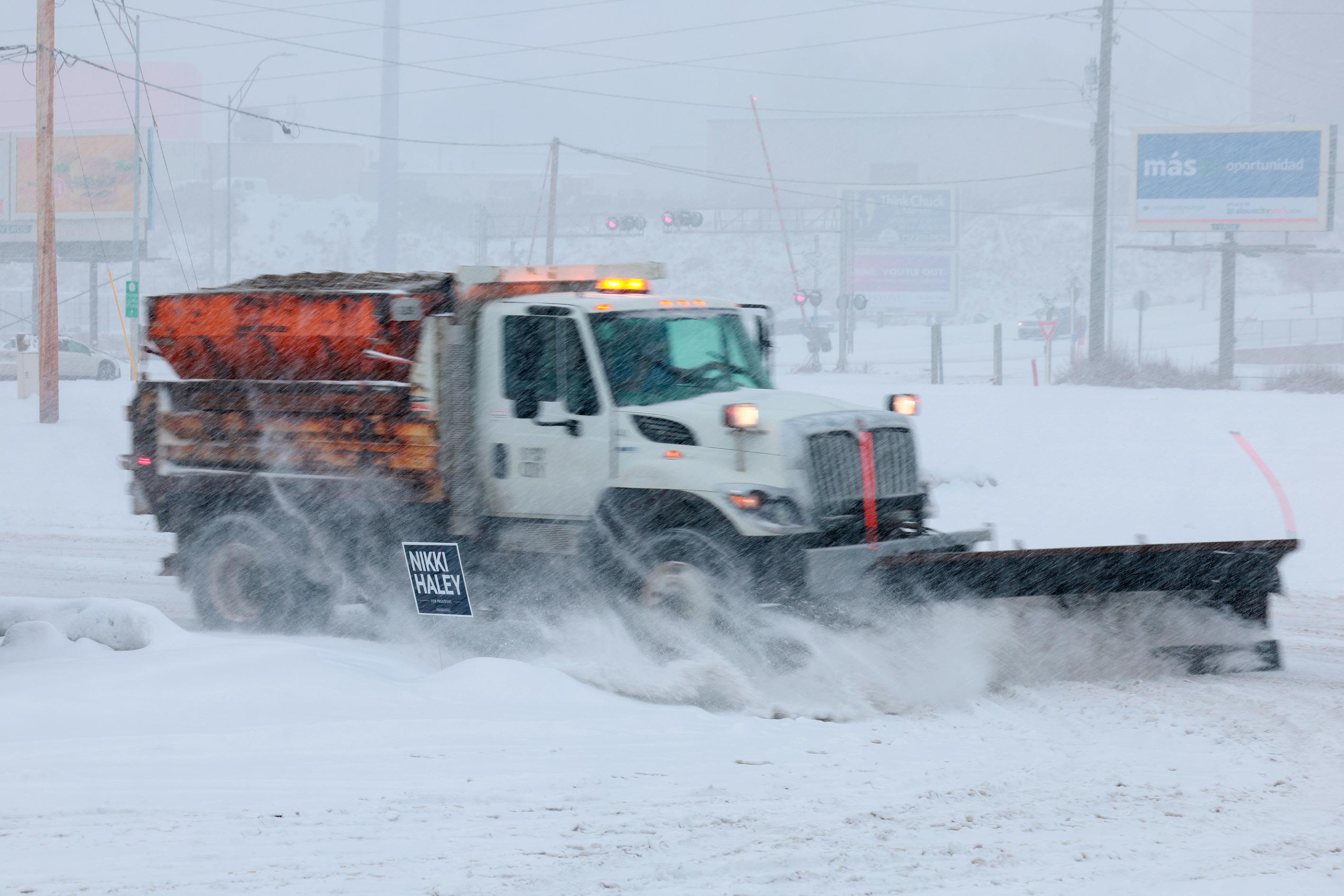
Wednesday is the last day that a strong storm that tore across most of the eastern United States, causing major state-wide power outages and necessitating numerous rescue operations, will strike New England. The most recent is this:
Widespread power outages amid cold temperatures: According to poweroutage.us, more than 600,000 households and businesses lost power in more than a dozen states on Wednesday morning, including more than 105,000 in Pennsylvania and almost 145,000 in New York. Governor Kathy Hochul of New York expressed her concern over households’ lack of electricity on Tuesday night in the subfreezing weather.
Storm turns deadly: As storms pummelled Alabama, Georgia, and North Carolina with strong winds and rain, at least four deaths were confirmed in those states.
Tornado reports and damage: Since Monday, there have been 25 reports of tornadoes in Texas, Alabama, Florida, Georgia, and South Carolina due to the storm. According to municipal clerk-treasurer Robin Chavis, “significant damage” from a possible tornado was recorded at Bamberg, South Carolina, 60 miles south of Columbia, where the century-old municipal Hall structure fell.
Storm’s last push: Although the wind, rain, and snow will leave the Northeast by Wednesday afternoon, Maine and other areas of northern New England are still being severely affected. In the morning, high tide and the storm’s gusts are forcing water onto the coastlines.
Flood worries are fueled by swollen waterways: According to the meteorological service, many rivers in the eastern United States were at significant flood levels early on Wednesday. The majority of these rivers are located in the Northeast and mid-Atlantic regions, including Pennsylvania and New Jersey. The Yantic River in Connecticut was on the verge of breaking its record-high level.
Flights canceled: FlightAware data shows that on Tuesday, there were over 1,350 canceled flights and over 8,700 delayed flights. Although the Boeing 737 Max 9 grounding is partially to blame, thunderstorms also significantly disrupted airport operations in Georgia, Dallas-Fort Worth, Florida, and North Carolina.
Dangerous driving conditions: Through Wednesday afternoon, there will be wind gusts, persistent rain, and snow in certain areas of New England and the interior Northeast, making driving hazardous.
Whiteout conditions in Iowa forced the closure of a portion of Interstate 80 on Tuesday afternoon, resulting in a multi-vehicle collision. During Monday’s snowstorm and whiteout conditions in Kansas, over thirty people—including children—became stuck and needed to be pulled from their cars and transported to a high school.
Another storm is on its way: On Friday and Saturday, a storm quite similar to this one is predicted to batter many of the same locations with all the threats. The storm is expected to follow a similar route, which means that the Southeast may see severe thunderstorms and tornadoes again, the Midwest may get snow, and the East Coast may have rain and wind once more.
reported deaths in three states
Authorities in Georgia, Alabama, and North Carolina confirmed many fatalities as storms with strong winds and a lot of rain pounded the region.
In Jonesboro, Georgia, a driver was discovered dead on a highway on Tuesday morning following a tree falling and smashing the front windscreen of a car amid heavy weather. According to the Clayton County Police Department, the fatality seems to have been influenced by the weather.
According to Birmingham Fire and Rescue Captain Orlando Reynolds, a tree falling on a car in Birmingham, Alabama, resulted in another death on Tuesday.

Tuesday morning, rescue personnel discovered the deceased inside the automobile, which still had the tree on top of it. On Tuesday, the region had gusts of over 30 mph and more than 2 inches of rain, soaking the ground.
According to Houston County Commission Chairman Brandon Shoupe, an 81-year-old woman passed suddenly during Tuesday’s storm in Cottonwood, Alabama, which is located more than 210 miles distant.
According to Shoupe, the woman’s mobile home was repeatedly overturned before she was discovered dead. The town suffered damage to several structures, and Shoupe estimated that recovery work may take “many, many weeks.”
According to Amy McCauley, Catawba County’s director of communications, one person was murdered and two others suffered serious injuries at a mobile home neighborhood in Claremont, North Carolina, which is located around 45 miles northwest of Charlotte.
According to McCauley, the National Weather Service is presently determining if the hamlet was struck by a tornado.
